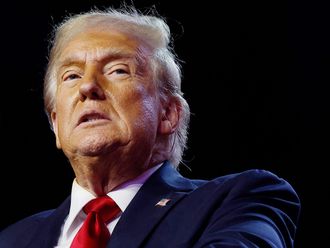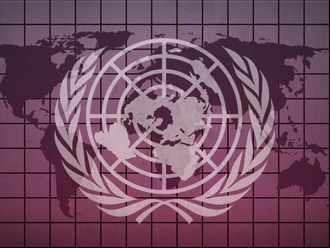
When US President Barack Obama attended his first Nato summit in April last year, his main interest was to initiate a new "strategic concept" for the military pact. That objective seems to have been accomplished. Last week, a group of international experts chaired by former US secretary of state Madeleine Albright announced a new doctrine for Nato. Since the former strategy devised in 1999 didn't sufficiently reflect the threat of "terrorism" nor Russia's geopolitical aspirations, the new doctrine addressed these two issues head-on. More important perhaps, part of the new strategy involves Nato making sure energy supplies are guaranteed, which can only mean that it wants a say in securing gas and oil deliveries from Russia and Central Asia. Combating "terrorism" stemming from failed states and tackling the threats of asymetrical warfare were also stated as major objectives.
Nato has repeatedly discussed what the changed geopolitical landscape means for it as a collective security institution. But it hasn't — until now — framed and formalised the alliance's response to these challenges in a revised doctrine. Given the fact that the alliance now includes 28 member countries with differing interests and military capabilities, agreeing on a new strategy was not an easy task. East European countries, which are now Nato members, for example, remain wary of Russia's hegemonic ambitions, a fear no longer prevalent in the western part of the continent. In addition, while the US wants Nato to focus more on counter-terrorism efforts outside Nato territory, many European members are deeply sceptical about such a global military role — as exemplified by the debate over Afghanistan.
Originally, Nato was created in 1949 as a response to the growing strength of the Soviet Union and the military threat it posed to Western Europe. From its inception until the early 1990s, Nato functioned as a classic collective security organisation, by definition and practice. The end of the Cold War and the demise of the Soviet Union deprived the military alliance of the reason and prerequisite for its existence. Yet, it did not resign itself to heading towards extinction.
New mission
In 1991, at the Copenhagen summit, Nato's core function in the post-Cold War era was defined as providing a "stable security environment in Europe, based on the growth of democratic institutions and commitment to peaceful resolution of disputes". The provision of security and the maintenance of stability within Nato and the regions immediately surrounding it became the focal point of Nato's new raison d'être, practically replacing its paramount function of the provision of collective defence for its members. Yet, the failure of Nato to respond collectively and act decisively in Bosnia made this more rhetoric than policy — hence the need to define a new mission and new concept. In February 1995, former Nato secretary-general Willy Claes defined the new role of the military alliance as confronting the "threat of Islamic fundamentalism". But this statement, which was presented in an awkward manner, provoked a wave of public anger throughout the Islamic world, forcing Washington to dismiss it out of hand.
After September 11, 2001, caution was no longer an option for the US; the enemy was clearly identified and the new role of Nato was clearly stated as fighting "Islamic terrorism". Since the September 11 attacks, Islam has been viewed in Washington in a way that tended to equate all of its manifestations with terrorism.
To draw support from its Nato partners and make the case against Islam convincing, the US resorted to Cold War tactics whereby communism was replaced by Islamism as a parallel ideology and sequential enemy. US policymakers have frequently used "Islamic terror" as the replacement for "the communist menace" or the "evil empire" — the ideological enemy against which Nato resources should be directed. Although on record the US has fervently asserted that it only oppose terrorism and has no quarrel with the religion of Islam, its policies in Afghanistan, Iraq and elsewhere leave no doubt about the real target.
Russia's new assertiveness and attempts to reclaim great power status under former president Vladimir Putin surprised Nato's strategists. The response to the emerging challenge was the adoption of a dual containment policy; practically recognising the return of the Cold War atmosphere but with Russia and the Islamic world on the other side of the trench this time.
Since he took office, Obama has frequently stated that he seeks to mend relations with both Russia and the Islamic world, which deteriorated markedly under his predecessor. This entailed a revision of Nato's world mission. Obama's call for a new doctrine has indeed been heeded, but his views have not been fully respected. Since the end of the Cold War, the underlying dilemma for Nato has been the lack of a common threat perception within the new, larger alliance. The question now is: will the new doctrine solve the problem? That must be everybody's guess.
Dr Marwan Al Kabalan is a lecturer in media and international relations at Damascus University's Faculty of Political Science and Media in Syria.











